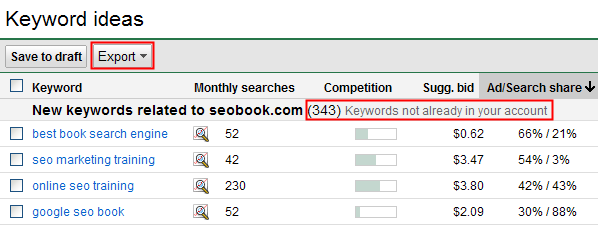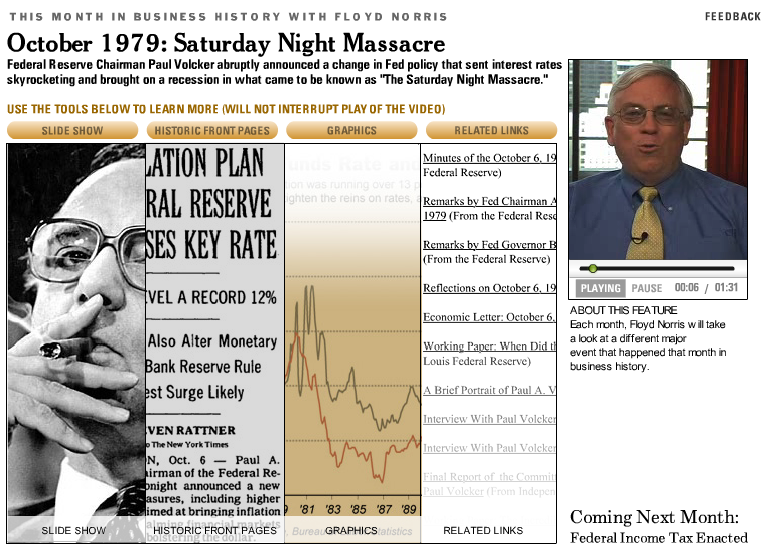50 Rapid Fire Tips For Power Blogging
 I have been blogging for a living for many years now. I’ve learned a lot and, today, I wanted to throw out a bunch of quick tips in rapid succession. The goals here are (1) get lots of traffic to your blog and (2) earn money with it.
I have been blogging for a living for many years now. I’ve learned a lot and, today, I wanted to throw out a bunch of quick tips in rapid succession. The goals here are (1) get lots of traffic to your blog and (2) earn money with it.
OK, here we go (in no particular order):
- Use Wordpress. No other platform is as flexible with all the plug-ins, in my opinion.
- Post often. I usually default to one post per day, when I’m asked. I try to do at least one per day on this blog, except for weekends.
- Use catchy blog post titles. Put yourself in the shoes of a person who is casually surfing the Internet, seeing your post along with hundreds of others. Will your blog headline stand out?Copyblogger is an awesome source for information on writing.
- Ask open ended questions. One of the best ways to invite commentary on your posts is to ask for it. Ask your readers questions and tell them to answer in the form of a comment.
- Comment on other blogs – often. I actually maintain a separate folder in Google Reader for relevant blogs I want to follow more closely than others. And, on those blogs, I comment regularly whenever I have something to say.
- Use Twitter. You’ve GOT to be out there, being social. Friendfeed, too.
- Use Twitterfeed to pipe your latest posts into Twitter. But, don’t ONLY use Twitterfeed. You’ve got to be a real person on Twitter, first and foremost. Twitter should not replace RSS.
- Make your RSS feed obvious, above the fold, and preferably use the orange RSS icon.
- Provide an RSS-to-Email option so people can subscribe to your latest posts without being forced to use an RSS reader. Many people still don’t use RSS. Feedburner provides a free RSS-to-Email service.
- Use images in your posts. Images communicate on aesthetic wavelengths words cannot.
- Use header tags to separate sections in your blog posts, where applicable. H1, H2, and H3 tags. And use good search engine keywords wherever possible in those headers.
- Structure your blog posts for easy scanning. Use header tags, lists, etc. Avoid long sentences and long paragraphs.
- Avoid Myspace-style blog designs. What I mean by this is super BUSY designs with too much on screen, animated graphics, etc. These things make your blog truly suck and makes your content too hard to pay attention to.
- If possible, use a custom Wordpress theme. It is getting to the point where people can recognize cookie-cutter themes. It is OK to use one, but at least modify it so that you have a unique header design.
- Start your blog’s mailing list as early as possible. The sooner you start, the longer you have to grow your list and, trust me, that list can be used to make money later. JeremyShoemoney made this mistake. John Reese used to hound him about building a list. When he finally got around to it, he realized how important it was.
- Research and choose your mailing list option correctly the first time. I recommendAweber. What you choose is up to you, however moving a mailing list later can be a huge pain. I know from experience.
- When choosing a topic to focus your blog on, two things should be considered: (1) Your interest in the topic, (2) How MARKETABLE your topic is.
- Learn to SELL. The way to a full-time income by blogging is to learn how to MARKET and sell things using your blog. Yaro Starak does a good job of selling via his blog, for example.
- Don’t discount Facebook. It is a powerful networking tool and you should take the time to build your network, just as you might on Twitter.
- Create a Facebook page. On Facebook, create a page for your blog or yourself and invite your readers and Facebook friends to become fans. This page can be your blog’s outpost on Facebook. Be sure to import your blog posts as notes.
- Don’t Be a Me-Too Blogger. You don’t want to become a copy-cat news blog, where you type news-style posts about what is happening in a saturated market. In technology, this is common. Offer something unique that cannot be found everywhere else in your market.
- Learn to think about your blog as a business. The blog is a promotional and delivery mechanism to your ultimate product or service.
- When writing your About Page, pay attention to what you write. Don’t just rattle off some dumb, cookie cutter facts. Your About Page should tell a story of who you are and why your blog is worth reading.
- Do lots of videos. Use TubeMogul to publish them in as many places as you can. And make sure your blog URL is not only in the video, but in the text description that accompanies the video.
- When making videos, be REAL and be personable. Your videos are an important component to your blog’s brand. Don’t waste the opportunity.
- Link to other, related blog posts regularly in your own posts. Not only your OWN posts, but the posts of others.
- Remember, blogging is a SOCIAL business. Be accessible to your readers and proactively get out there and talk with other people in your niche.
- If you can afford it, travel to blogging conferences. Not only can you learn a lot, but socializing with successful people often breeds so much motivation and success in yourself that is simply beyond words.
- Write an e-book, create some videos – whatever – but the idea is to create something which is of value to your readers on your subject, and have it available to SELL to them on your blog.
- Get involved as an affiliate and start linking to products relevant to your posts using your affiliate links. You are providing relevant links to your readers (valuable) while potentially making some money.
- Don’t Post Low Feedburner Counts. Do not show your RSS subscriber count unless you have a high enough number (at least a few hundred). A low number acts as social proof that your blog has no readers, and that’s not good.
- Install Popularity Contest or some similar plug-in which ranks your posts based on popularity. Whether you display this information in public on your blog or not, knowing which of your posts are most popular tells you that that particular subject material works and you should probably do more of it.
- Put relevant keywords into your blog’s title. Use All-In-One SEO to have more control over the titles across your blog.
- Use a Photo Gallery. People dig photos, so a photo gallery can be a great component to your blog. If you use Flickr, check out the Flickr Photo Album plug-in for Wordpress.
- Create an RSS widget for your blog on WidgetBox and make it available for your readers to embed on their own blogs if they so choose.
- Spend some time creating some killer posts for your blog, the link to them somewhere so that new arrivals can quickly see your best work. It is your best stuff which is going to sell them into becoming a subscriber.
- Make Sharing Easy. Put options on your blog for your readers to share your posts across social media. ShareThis is a great option for this.
- Share and share alike. If you submit your own posts to sites like Digg or StumbleUpon, be sure to also submit other posts. I might even recommend a 10 to 1 ratio of other people’s posts to your own posts. You do not want to develop a reputation on these sites as somebody who only submits their own content.
- When you write a post for your blog, aim to be helpful. You want your visitors to come away with a solution to the problem they arrived with. Chris Brogan does so well because his posts are truly helpful.
- Read other blogs often. When starving for ideas to write about, go to your RSS reader and read related blogs. Often, your own post can be a response to a post on another blog. In fact, this is usually a good idea.
- Train your readers to do what you want, if needed. If you’re in a market where the people will not know how to use social media, RSS and some of these other things that help promote your blog, TRAIN THEM. Write posts or do videos which show your visitors how to Digg a post, use StumbleUpon, how to use RSS, etc. Perhaps you can educate them and they’ll become part of your promotion army for your own blog.

- When starting a blog, decide on it’s mission. Your posts should, for the most part, center around a specific theme if you want your blog to really take off. If you run a personal diary kind of blog, where you write about anything that comes to mind, your blog traffic will always be limited because your blog will never attract any particular segment of people. Stay on topic. If you have no specific topic, that’s fine, but realize your blog is going to be more a hobby than a business at that point.
- Don’t overload your blog with javascript widgets. These things slow down the load speed of your site. In fact, just recently I had to get rid of the MyBlogLog widget on this blog because it was having some effects on page loading time.
- Use Analytics. I personally use Google Analytics as well as the Wordpress.com Stats plug-in on this blog.
- Use Windows Live Writer. It is the best blogging client program out there. Even though it is a Microsoft product and a Windows-only product, it is also better than any Mac blogging client I have tried. And it’s free.
- Be yourself. I believe it is a good thing to show personality on your blog. Don’t be a fake. People can see right through it. Chris Pirillo draws people to his blog and Ustream feed almost solely on personality alone.
- Don’t write like you’re writing for Britannica. You want your spelling and grammar to be correct, but be colloquial. Talk to people like you would normally talk to people, not as if you’re writing a PH.D. dissertation.
- Link To Your Social Profiles On Your Blog. Link your various social media profiles right on your blog so that your readers can connect with you outside the confines of your blog.
- Go where your readers are. Every market is different. When I blog about blogging, I know most of my readers are pretty adept online and probably hang out in the social media space frequently. If your readers are young, they might be on Myspace. If they’re Linux nerds, they may be in the Ubuntu forums. Regardless, you need to maintain a consistent presence in the spaces your readers congregate. Be an authority and be helpful, and traffic will be drawn over to your blog.
- Equal time reading and writing. You should probably spend just as much time reading and learning as you do writing for your blog. This is how you expand your knowledge, become a better blogger, and get new ideas for your own site. Blogging isn’t all about you. Remember that.
Your Turn
Do you have any advice you would like to share? What tips would you like to add? Please comment below.
You Might Also Like:

 To get your website properly indexed by Google and other search engines you will need a sitemap. A sitemap is a file on your website that shows the search engines exactly what files you have.
To get your website properly indexed by Google and other search engines you will need a sitemap. A sitemap is a file on your website that shows the search engines exactly what files you have.







